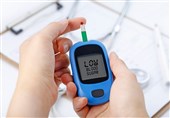Study Finds Prediabetes Linked to Higher Death Risk in Younger Adults
TEHRAN (Tasnim) – An analysis has found that prediabetes increases mortality risk only among adults aged 20 to 54, underscoring the need for targeted screening and prevention efforts during prime working years.
Researchers from the University at Buffalo examined data from 38,093 adults participating in the US National Health and Nutrition Examination Survey (NHANES) between 2005 and 2018.
Prediabetes was defined by self-report or hemoglobin A1c (HbA1c) levels of 5.7% to 6.4%.
The analysis followed Strengthening the Reporting of Observational Studies in Epidemiology (STROBE) guidelines and used National Center for Health Statistics files linked to the National Death Index.
Covariates included demographic details, lifestyle factors, and existing health conditions.
Unadjusted results showed adults with prediabetes faced higher all-cause mortality compared to those without the condition (hazard ratio [HR], 1.58; 95% CI, 1.43-1.74).
However, after adjusting for demographics, lifestyle, and comorbidities, the association was no longer statistically significant (HR, 1.05; 95% CI, 0.92-1.19).
Significant age-related differences emerged.
The risk remained elevated only for adults aged 20 to 54, with an HR of 1.68 (95% CI, 1.25-2.20).
No significant link was found among older age groups or across racial and ethnic categories.
Weighted mortality was 10.4% among those with prediabetes, compared with 7.4% in those without.
The prediabetes group also showed higher rates of hypertension, heart disease, and cancer history.
Body mass index averaged around 29 for both groups.
Researchers suggested that in younger adults, lifestyle habits, limited healthcare access, genetic predispositions, or delayed diagnosis may contribute to higher risk.
They called for prevention programs tailored to working-age adults, including flexible and accessible interventions.
The study concluded that while prediabetes does not generally predict higher mortality after adjusting for other factors, early identification and targeted prevention are critical for those under 55.
The authors noted limitations, including the cross-sectional design, reliance on self-reported data, and lack of longitudinal follow-up.






